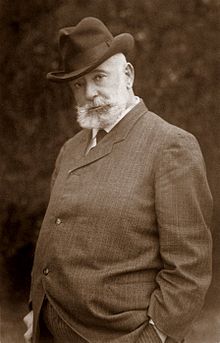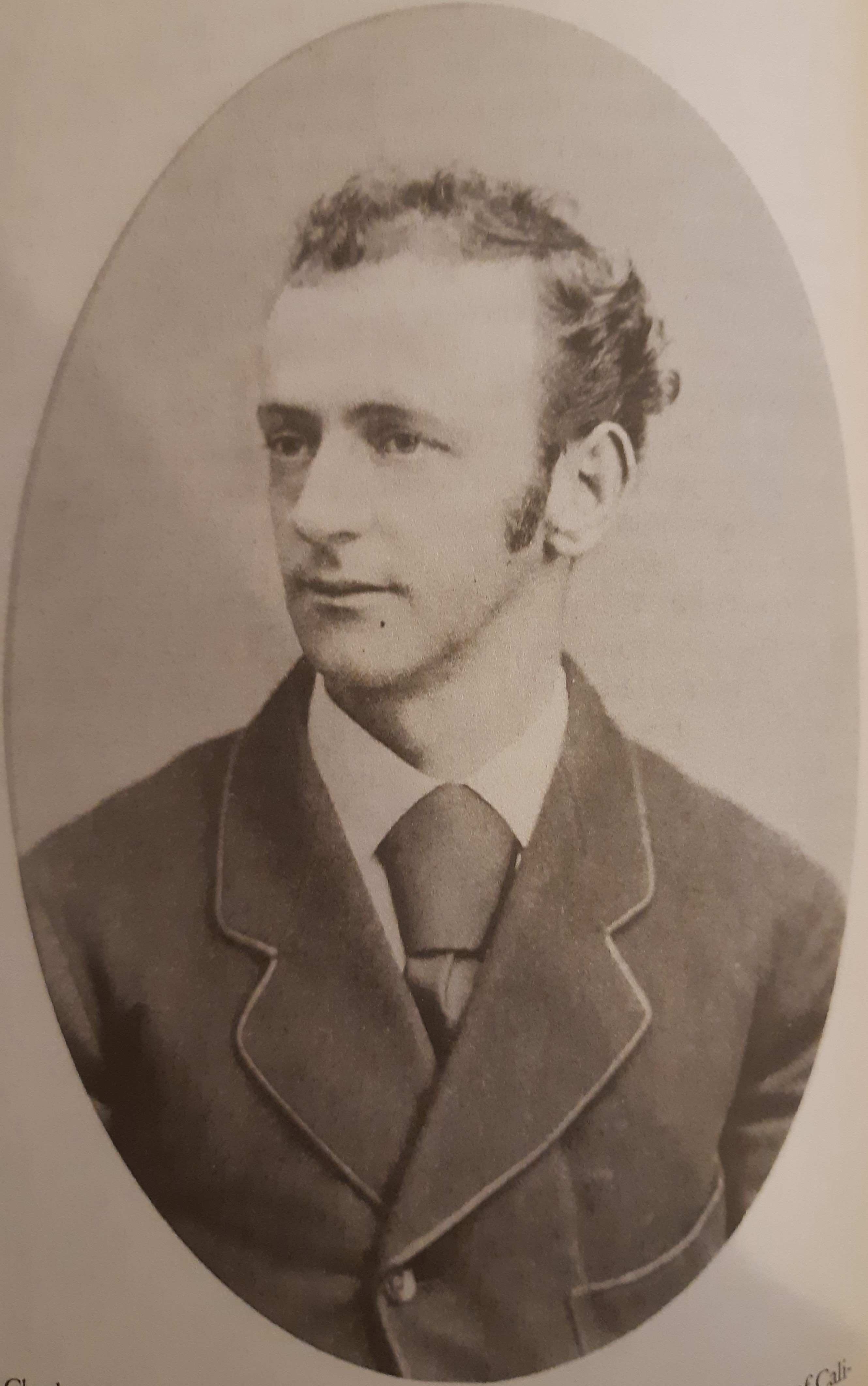

Partner Francis Davis Millet
Queer Places:
262 Calle S. Domenico Dorsoduro, 30123 Venezia VE
San Carlos Cemetery, 792 Fremont St, Monterey, CA 93940, Stati Uniti
 Charles Warren Stoddard (August
7, 1843 – April 23, 1909) was an American author and editor best
known for his travel books about Polynesian life.
Charles Warren Stoddard (August
7, 1843 – April 23, 1909) was an American author and editor best
known for his travel books about Polynesian life.
Stoddard was homosexual.[11] He praised South Sea societies' receptiveness to homosexual liaisons and lived in relationships with men.
From San Francisco, late in 1866, Stoddard sent his newly published Poems to Herman Melville, along with news that in Hawaii he had found no traces of Melville. Having written even more fervently to Walt Whitman, Stoddard had been excited by Typee, finding the Kory-Kory character so stimulating that he wrote a story celebrating the sort of male friendships to which Melville had more than once alluded. From the poems Stoddard sent, Melville may have sensed no homosexual undercurrent, and the extant draft of his reply in January 1867 is noncommittal.
On February 8, 1867, Charles Warren Stoddard, first wrote from San Francisco to Walt Whitman, beseeching him for an autograph. Whitman did not respond. But two years later, on March 2, 1869, the determined Stoddard wrote again, this time from Honolulu. Stoddard justified his persistence with Whitman's own come-on, quoted from Leaves of Grass: Stranger! if you, passing, meet me, and desire to speak to me, why should you not speak to me? And why should I not speak to you? On June 12, 1869, from Washington, D.C., Whitman responded positively to Stoddard's call. The poet was fascinated by Stoddard, and even curious to meet him. Stoddard never arranged a meeting, despite Whitman's repeated invitations.
Francis Davis Millet, a well-regarded American Academic Classicist artist, had a studio in Rome in the early 1870s and Venice in the mid-1870s, where he lived with Stoddard during the winter of 1874-75. Historian Jonathan Ned Katz presents letters from Millet to Stoddard that suggest they had a romantic and intimate affair while living a bohemian life together.[12] On May 5, 1875, Stoddard set off for Chester, England, to see Robert William Jones, a fellow with whom, a year earlier, he had shared a brief encounter and who had since been sending him passionate letters. By the summer of 1875, Millet had run out of money and had returned to America, writing to Stoddard, first from Boston, then from his parents' home in East Bridgewater, MA, where he had a studio.

It was Stoddard that “fathered” one of Harvard’s leading Whitmanic luminaries of the era, George Santayana’s faculty colleague William McMichael Woodworth. Remembered years later, Stoddard’s feelings for the fourteen-year-old boy in 1878 continued when the same young man entered Harvard College six years later, in 1884, after schooling in Europe, and carried over to the grown man who stayed on at Harvard to get his doctorate in zoology under Louis Agassiz. Indeed, they were thriving still in the summer of 1903, when Roger Austen reports: By this time Dr. William McMichael Woodworth had become something of a minor legend at Harvard. His home on Brattle Street was famous for its splendid array of exotic furnishings. As the keeper of the Museum of Comparative Zoology, Woodworth had accompanied Louis Agassiz on collecting trips to Samoa, Australia, Africa and South America, bringing back curios for his house as well as for the museum. Woodworth also collected a wide variety of seemingly disparate people. In his library on Sunday afternoons, one might find the colonel of marines from the Charlestown Navy Yard and an English army captain rubbing elbows with Charles Macomb Flandrau, author of Harvard Episodes, and Pierre La Rose, author of Harvard Celebrities.
Amy Sueyoshi additionally traces Stoddard's affair with Yone Noguchi through their passionate correspondence to one another.[13] In the film Leonie, Stoddard (portrayed by Patrick Weathers) is shown being flirtatious with the character Yone Noguchi.[14]
Stoddard also corresponded with Thomas Wentworth Higginson.
My published books: